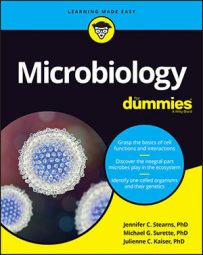Making a living from light energy is a double-edged sword — it means being constantly exposed to a source energy that can be harmful. Bright light causes the formation of singlet oxygen (1O2) through photo-oxidation reactions. Singlet oxygen, and free radicals in general, are toxic because they can randomly energize other molecules.
When members of the photosynthetic complex are oxidized by singlet oxygen, they become nonfunctional, which can cause major problems. Carotenoids come to the rescue by absorbing high-energy blue light (440 nm to 490 nm) and quenching the toxic oxygen species (namely, 1O2) before they cause damage.
Carotenoids are the reason many photosynthetic bacteria, other than the cyanobacteria, appear in bright colors of pink, red, brown, or yellow. This is because they absorb blue light and reflect red, brown, or yellow and because of the sheer number of them in the cell. Although carotenoids can act as accessory pigments transferring the light energy they’ve gathered to the reaction center, for the most part they’re photoprotective.
Members of another class of pigments called phycobilins are important to cyanobacteria and red algae. They enhance the light-gathering ability of these organisms by absorbing energy and transferring it to the main chlorophylls involved in photosynthesis.
Red phycobilins absorb green light (550 nm), whereas blue phycobilins absorb red light (620 nm). All phycobilins have a structure called a bilin, which is a pyrrole ring along an open chain (seen in the nearby sidebar), and are bound to a protein to make the a complex called a phycobiliprotein.
Many phycobiliproteins combine to form a phycobilisome, a structure of tightly packed light-harvesting molecules that help cyanobacteria and algae to grow in places with very low light levels.

